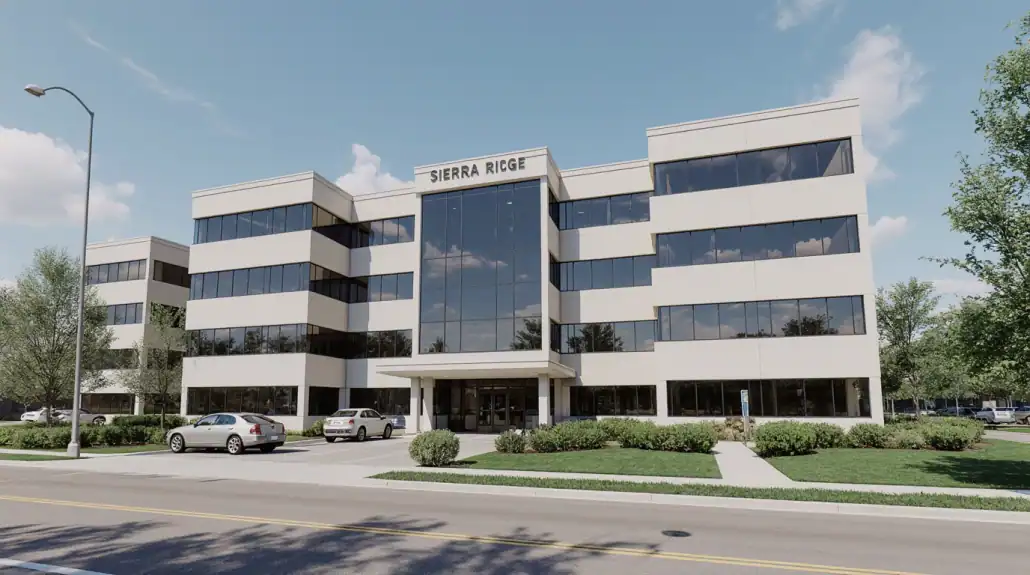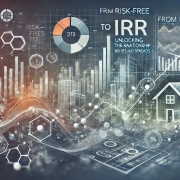Understanding Stabilization Through The Lens Of Operating Expense Ratio
The term “stabilized” is deeply embedded in the language of real estate. It shows up frequently in financial models, offering memoranda, development strategies, and underwriting assumptions. So frequently, in fact, that its meaning is often taken for granted.
Yet when examined more closely, the concept reveals itself to be far more nuanced than it first appears.
While stabilization is commonly associated with occupancy thresholds or leasing milestones, its definition extends well beyond these surface metrics. True stabilization occurs at the intersection of operational efficiency, market convention, and financial durability.
In this post, I’d like to examine more rigorously what it means for a property to be truly stabilized. To do so, I’ll use the Operating Expense Ratio (OER) as the analytical lens. Though simple in form (i.e. operating expenses divided by effective gross revenue), the OER can offer profound insight into a property’s stability and overall performance.

A sleek office building at sunset in a city
The Accelerator Q&A Forum’s Role in this Post
In a recent A.CRE Accelerator Q&A session, a thoughtful line of inquiry from a participant sparked a rich conversation that underscores the subtle but critical question in real estate financial analysis: what does it really mean for a property to be “stabilized”?
The ensuing discussion unpacked this term through the lens of the aforementioned, deceptively simple metric, the Operating Expense Ratio (OER).
This post offers an in-depth recap of that exchange, not by recounting the conversation itself, but by using it as a framework to explore how financial ratios like the OER serve as proxies for deeper operational and investment health.
Or put another way, while the term “stabilized” may seem straightforward, its implications extend far beyond occupancy rates or leasing timelines.
Stabilization: It’s about More Than Just Occupancy
In most introductory discussions, stabilization is defined as the point at which a property reaches a certain level of consistent occupancy (e.g. 95% for a multifamily asset, 90% for an office asset, etc). From a leasing or physical standpoint, this makes sense: a property that is consistently leased is operationally stable.
But from a financial standpoint, occupancy alone is insufficient. A fully leased property that is poorly managed, leased at below market rents, or subject to irregular cost burdens can still be cash-flow negative.
Thus, stabilization must also incorporate operating efficiency and cash flow viability. That’s where OER becomes particularly useful.
Think of it this way: a stabilized asset isn’t just “not broken.” It’s an asset that’s consistently performing at its expected or market-appropriate level, generating enough NOI to support ongoing obligations and returns.
So yes, a high OER might describe a “bad investment” that operates consistently, but it fails the test of what investors and lenders would typically consider stabilized.
In this sense, true stabilization must reflect both consistency and sufficiency. A property might demonstrate steady operations, but if its income fails to exceed expenses in a way that supports its capital stack, it cannot reasonably be labeled as stabilized in an investment context.
The Operating Expense Ratio Reality Check
The OER reflects how much of a property’s revenue is consumed by operating costs. For many property types and markets, this figure ranges from 20% to 50%. When the OER creeps above its market-expected range, it signals that the asset is struggling to convert revenue into distributable cash flow.
An OER of 86%, for instance, means that for every $1.00 of effective gross income, $0.86 is spent just to keep the lights on before capital expenditures or debt service. This leaves little room for debt coverage, capital reserves, or equity returns. And that, regardless of occupancy, is a clear sign of a property that is not stabilized in the financial sense.
The Role Of Market Comparables
This introduces an important nuance: stabilization is a market-relative concept. An 86% OER might seem high in most U.S. office submarkets, but what if that’s the norm in a particular locale, say, one with unusually high insurance premiums due to wildfire risk, or a local tax regime that inflates OpEx?
Even in these cases, a property with a high OER could be considered stabilized relative to its peers if it is operating in line with prevailing norms.
However, such scenarios often point to market dislocation or structural inefficiencies. An entire market operating at breakeven is not sustainable and will likely face eventual correction through rent growth, redevelopment, or shifting capital flows.
Unlevered Metrics, Levered Realities
It’s also important to remember that the operating expense ratio (OER) is calculated before debt service. This means that even if a property is marginally cash flow positive on an unlevered basis, it may still be unsustainable once financing is layered in. A property with no cushion for debt service or capital expenditures cannot reasonably be called stabilized from an investor or lender perspective.
True financial stabilization requires more than consistent occupancy. It requires consistent net operating income and enough margin to absorb capex, debt, and provide return. That is the fundamental distinction: operational regularity versus financial viability.
Redefining Stabilization For Analytical Clarity
Over time, I’ve come to see that the term “stabilized” is both more nuanced and more powerful than it initially appears. It’s not enough to rely on surface metrics like occupancy or leasing milestones. In practice, stabilization must be evaluated through the lens of economic performance, market context, and investment sustainability.
So, when considering whether an asset is truly stabilized, these are the attributes that you could look for:
- Sustained Occupancy that Signals Market Demand
The first and most widely recognized sign of stabilization is physical and economic occupancy. When an asset maintains a high occupancy rate over a sustained period, it demonstrates its ability to attract and retain tenants. This consistency not only provides predictability in revenue but also signals demand alignment with the market.
However, it is crucial that the occupancy is sustained and not artificially boosted by temporary concessions or leasing strategies that inflate the numbers without long-term viability. True stabilization requires durable tenancy and reliable, recurring income streams.
- Operational Efficiency Benchmarked to Market Standards
Occupancy alone is not sufficient. A stabilized property must operate efficiently relative to its peers, so metrics like the Operating Expense Ratio (OER) allow for benchmarking against similar properties.
For example, an office building with a 50% OER in a market where the norm is 35% raises concerns, even if it’s fully leased. Stabilization, in this sense, is a comparative exercise: we must ask, “Is this asset performing in line with what the market considers normal?”
If not, it may be underperforming operationally, signaling issues in management, leasing strategy, or cost structure.
- Strong NOI to Support Reinvestment and Financial Commitments
Net Operating Income (NOI) is the foundation for servicing both capital reinvestment and financing obligations. A stabilized property must generate enough NOI to cover debt service and fund necessary capital expenditures, (i.e. repairs, replacements, and tenant improvements).
That said, this should not be a razor-thin margin. Lenders and equity investors typically expect a buffer, measured as the ratio of net operating income to debt service obligations (i.e. DSCR), to ensure the property can weather minor downturns or operating hiccups.
Without this margin, the asset is vulnerable and therefore not genuinely stabilized.
- Distributable Levered Cash Flow that Sustains Returns
Finally, the ultimate test of stabilization is whether the property produces positive cash flow after debt service and all capital obligations. Investors and sponsors expect a return on their investment.
A property that merely breaks even – or worse, consistently operates at a deficit once leverage is introduced – fails to deliver its intended function as a cash-flowing investment. While unlevered returns may show promise, the ability to support a realistic capital stack and still yield a return to equity is what determines true financial stabilization.
If any of these pillars are missing, the property may be leased and functioning, but it is not financially stabilized. It is, instead, a candidate for operational improvement, capital restructuring, or repositioning.
These are the assets that occupy the gray space between “core” and “value-add” in investment strategy (i.e. core-plus), and recognizing the distinction early is essential for proper underwriting and portfolio planning.
Case Study – Stabilization Beyond the Surface
Ironcrest Partners, a regional real estate investment firm focused on value-add office and industrial assets, recently acquired Sierra Ridge Office Park, a 104,500 SF, four-building suburban office complex in Sacramento, California. Built in the early 1990s, the campus-style property is situated near Highway 50 and had suffered from deferred maintenance, inconsistent leasing, and outdated common areas.
At acquisition, Sierra Ridge was 88% occupied and generating approximately $2.25 million in effective gross income (EGI) annually. However, despite the respectable occupancy level, the property’s financials raised red flags. Total operating expenses were approximately $1.92 million, resulting in an Operating Expense Ratio (OER) of 85.3%:
Operating Expense Ratio = Operating Expenses / Effective Gross Income
OER = $1,920,000 / $2,250,000 = 85.3%
What The Operating Expense Ratio Reveals
While leasing brokers might describe the asset as stabilized based on occupancy alone, Ironcrest’s underwriting team knew otherwise. With an NOI of just $330,000, the asset was barely treading water. The NOI was insufficient to service debt let alone produce a meaningful equity return.
The business plan involved a $3.2 million renovation program focused on upgrading HVAC systems, common area improvements, and rebranding. Ironcrest also renegotiated service contracts and replaced the third-party property manager with an in-house team, reducing management and operating inefficiencies.
By the end of year one, occupancy reached 93%, average rents climbed from $21/SF to $24.50/SF, and EGI increased to $2.62 million. More importantly, cost controls reduced total operating expenses to $1.36 million, lowering the OER to a much healthier 51.9%:
OER = $1,360,000 / $2,620,000 = 51.9%
This operational turnaround pushed NOI to $1.26 million, a nearly fourfold increase. The asset was now producing enough income to cover debt service, reserve requirements, and deliver regular distributions to investors.
Using operating expense ratio to rethink “stabilization”
In this hypothetical example, Sierra Ridge Office Park illustrates that occupancy alone doesn’t define stabilization. At acquisition, the property’s 85.3% OER flagged operational inefficiencies that made it financially unstable. After executing a value-add strategy that improved both income and expense performance, Ironcrest created a truly stabilized asset; one that not only performed consistently but also generated sufficient returns to satisfy both lenders and equity partners.
The Operating Expense Ratio served as a clear, early indicator of where the asset stood and where it needed to go.
Final Thoughts
In many ways, stabilization is both a qualitative and quantitative threshold. It requires us to go beyond surface-level metrics and assess whether a property is truly functioning as a sustainable investment. The Operating Expense Ratio, while simple, is an elegant proxy for that deeper analysis.
As real estate professionals, our task is not only to calculate but to interpret. To ask whether a property is stabilized is not to inquire about its current occupancy alone, but it is to ask whether it can fulfill its obligations, support its capital stack, and generate acceptable returns over time.
The OER, like many other financial ratios, is deceptively simple but richly informative. It bridges the gap between operations and finance, serving as an early warning system for underwriting, asset management, and capital markets decision-making.
In that light, a high OER is a diagnostic clue. And in the right analytical hands, it’s a signal that helps us think more critically about the assets we underwrite, manage, and invest in.
Frequently Asked Questions about Stabilization and the Operating Expense Ratio
What does “stabilized” typically mean in real estate?
Traditionally, stabilization is linked to occupancy thresholds—e.g., 95% for multifamily, 90% for office. But the post argues that occupancy alone is not enough; true stabilization requires financial durability and operating efficiency.
Why is occupancy alone not a reliable measure of stabilization?
A fully leased property can still be unstable if it is poorly managed, leased below market rents, or burdened with high costs. Stabilization must reflect both consistency (steady operations) and sufficiency (enough NOI to cover obligations and returns).
What is the Operating Expense Ratio (OER)?
The OER is “operating expenses divided by effective gross revenue.” It shows how much income is consumed by operating costs. Typical ranges are 20%–50%, but if the OER is too high relative to market norms, the property struggles to generate distributable cash flow.
How does OER help assess whether a property is stabilized?
OER provides a reality check: even if occupancy is high, a property with an inflated OER cannot sustain debt service, reserves, or investor returns. Stabilization requires both strong occupancy and a market-appropriate OER.
Is stabilization absolute or market-relative?
It is market-relative. An OER of 86% would be alarming in most U.S. office markets, but if high expenses are normal for a particular location (e.g., wildfire-prone areas with high insurance), the property might still be considered stabilized relative to peers.
Why must NOI and debt service coverage be considered in stabilization?
Because OER is unlevered, it excludes debt service. A property can look stable operationally but fail to cover debt once financing is added. True stabilization requires NOI margins sufficient to support debt, capex, and investor distributions.
What attributes define a truly stabilized property?
The post identifies four pillars:
Sustained occupancy aligned with market demand.
Operational efficiency benchmarked to peers (OER within range).
Strong NOI to fund reinvestment and service obligations.
Positive levered cash flow that supports equity returns.
Can you share a case study where OER revealed true stabilization?
Yes. At acquisition, Sierra Ridge Office Park had 88% occupancy but an 85.3% OER, leaving minimal NOI. After renovations and expense controls, the OER dropped to 51.9% and NOI quadrupled. Only then could the property be considered truly stabilized.









